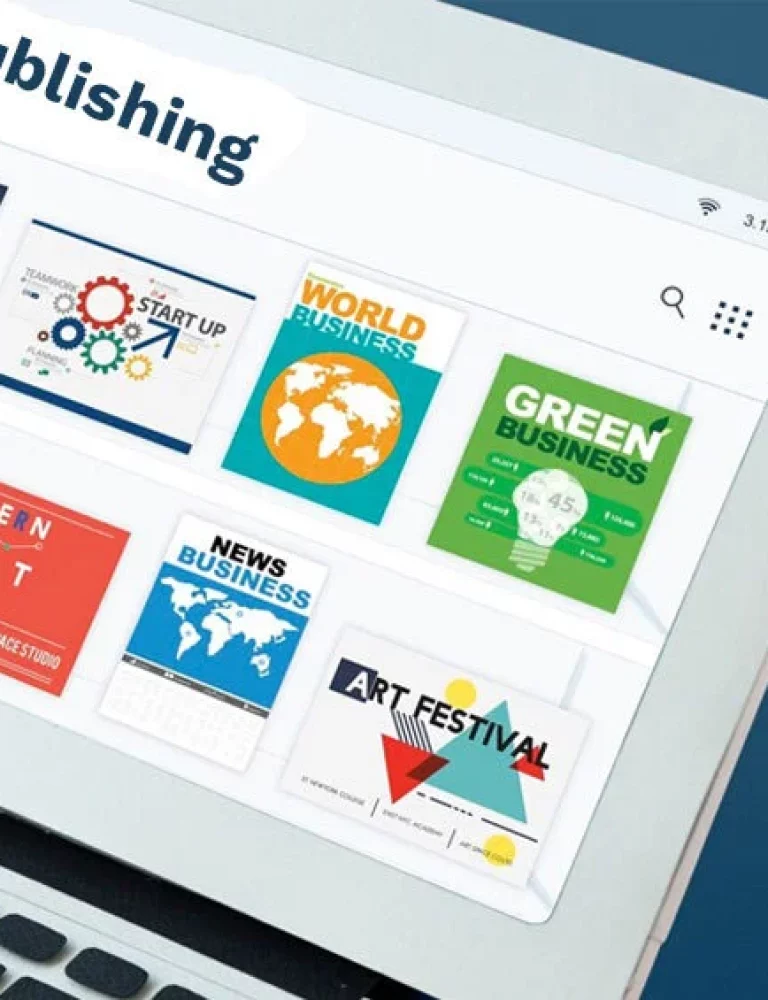In this age of constant evolution, our learning experiences utilize innovative technologies and tools to ensure that students receive an engaging and effective education. One such advancement is the dynamic eBook, a digital resource that goes beyond traditional static texts to offer interactive, multimedia-rich learning experiences.
Such dynamic eBooks incorporate various features like animations, videos, quizzes, and hyperlinks, providing students with an immersive and personalized learning journey. They cater to diverse learning styles, making complex concepts easier to grasp through interactive elements.
In this article, we will explore the world of dynamic eBooks, their advantages, unique features, and how they diverge from traditional books. Let’s dive in!
Table of Contents:
II. The Power of Dynamic eBooks in Education
- Interactive Elements
- Collaborative Learning
- Cost-Effectiveness
- Real Time Updates
- Portability and Convenience
- Accessibility
- Customizing Options
- Note-Taking Capabilities
III. Final Words
What is a Dynamic eBook?
A dynamic eBook refers to a digital interactive book that enhances the reading experience by letting readers interact with its multimedia content. Unlike traditional books, dynamic eBooks do not just come with plain text and static images but much more.
Some of the features of a dynamic eBook include:
- Interactive elements like quizzes, hyperlinks, simulations, and games
- Adaptive learning mechanisms with multiple customizable elements
- Accessibility options like text-to-speech, adjustable font size, etc.
- One-click integration and syncing with online resources and platforms
- Real-time updates like research findings, current affairs, and curriculum changes
Additionally, dynamic eBooks can incorporate multimedia elements such as videos, animations, and audio clips to enhance understanding and engagement. These elements can make complex topics more accessible and appealing, especially for visual or auditory learners.
With the aid of KITABOO, an innovative digital textbook platform, publishers and educators can now easily include interactive features like animations, videos, quizzes, and photos in their publications. Static PDFs are transformed into rich, captivating digital books by KITABOO, which enthralls readers and promotes deeper comprehension.
The Power of Dynamic eBooks in Education
Dynamic eBooks are becoming increasingly popular in educational settings and beyond due to their numerous interactive features.
With their role as interactive eBooks for students, dynamic eBooks and digital publishing platforms like KITABOO have brought a paradigm shift from traditional teaching-learning practices.
Here’s a snapshot of the transformative power of dynamic eBooks in education:
1. Interactive Elements
Young learners often find reading traditional books tedious and discouraging due to a lack of engagement and stimulation.
Unlike conventional static books, dynamic eBooks keep learners engaged and interested for long durations through their numerous interactive features. Elements like pop quizzes and games enhance knowledge retention and foster 21st-century skills like problem-solving and critical thinking in learners.
2. Collaborative Learning
The National Educational Policy (NEP) 2020 of India has highlighted the importance of collaborative learning for students to enhance their learning outcomes.
Through its integration features, dynamic eBooks can be easily synchronized with other platforms, allowing learners to communicate with each other while engaging with the dynamic eBook. Teachers and educators can also utilize this feature to communicate with their colleagues and collectively enhance their teaching-learning outcomes.
3. Cost Effectiveness
While the initial adoption of dynamic eBooks may involve some upfront costs, they ultimately prove to be more cost-effective than traditional print textbooks. Unlike printed materials, dynamic eBooks are delivered digitally, eliminating expenses associated with printing, shipping, and storage.
Moreover, the ability to update content electronically significantly reduces the need to purchase new textbook editions. This not only saves money for educational institutions and students but also ensures that learners always have access to the most current and relevant content available.
4. Real-Time Updates
Students must make extra effort to update themselves with the latest information after reading about specific topics in printed textbooks.
However, dynamic eBooks can automatically update the information by reflecting the latest information, research findings, or curriculum changes. This guarantees that the information will always be pertinent and up-to-date, doing away with the need for regular edition changes and saving teachers’ time and students’ expenses.
5. Portability and Convenience
These interactive eBooks for students can be accessed on various devices like laptops, smartphones, tablets, e-readers, etc. Because of this ease of access, readers can conveniently carry their books wherever they go, eliminating the need to carry bulky textbooks.
Additionally, dynamic eBook platforms like KITABOO also offer regular updates across all the synced devices, allowing students to access the content with the same convenience on each device they use.
6. Accessibility
Dynamic eBooks are highly inclusive and offer interactive features to all users equally. Its accessibility features, like text-to-speech functionality, adjustable font sizes, and compatibility with the screen, allow users with visual impairments and cognitive disabilities to consume the content effectively and effortlessly.
Also, dynamic eBooks can be accessed on various devices, including computers, tablets, and smartphones, making them convenient for users who prefer different platforms or need to switch between devices. This flexibility ensures that readers can access their eBooks anytime and anywhere, whether at home, in transit, or in educational settings.
7. Customizing Options
Dynamic eBooks offer numerous customizable features that accommodate different learning preferences and methods. Adaptive learning algorithms can provide a personalized learning environment that optimizes efficiency by adjusting the information to each reader’s skill level, learning style, and areas of interest.
8. Note-Taking Capabilities
Dynamic eBooks can also be integrated with the revolutionary features of note-taking and annotation to give readers a more interactive and engaging experience with the content.
With the advantage of highlighting important sections, taking notes, and annotating directly within the digital platform, the learners can develop deeper comprehension and understanding.
Additionally, the digital nature of these annotations ensures that they are easily accessible, searchable, and organized, allowing readers to revisit and review their notes effortlessly.
Final Words
Dynamic eBooks are playing a massive role in transforming the educational landscape and aligning it to students’ 21st-century learning needs.
By effectively harnessing dynamic eBooks’ numerous capabilities, students and teachers can optimize their learning and teaching outcomes. Policymakers and educators can also utilize these interactive books to address students’ growing needs and revolutionize the education system.
Digital textbook platforms like KITABOO are playing a huge role in creating and distributing dynamic eBooks on the market. This platform offers advanced DRM protection, interactive features, and seamless integration with existing educational systems, making it a preferred choice for educators and publishers alike.
Team up with us to discover the magic of dynamic eBooks and experience a new way to read and learn!
Discover How An Ebook Conversion, Publishing & Distribution Platform Can Help You
Kitaboo is a cloud-based content platform to create-publish & securely distribute interactive mobile-ready ebooks.
You May Also Like









